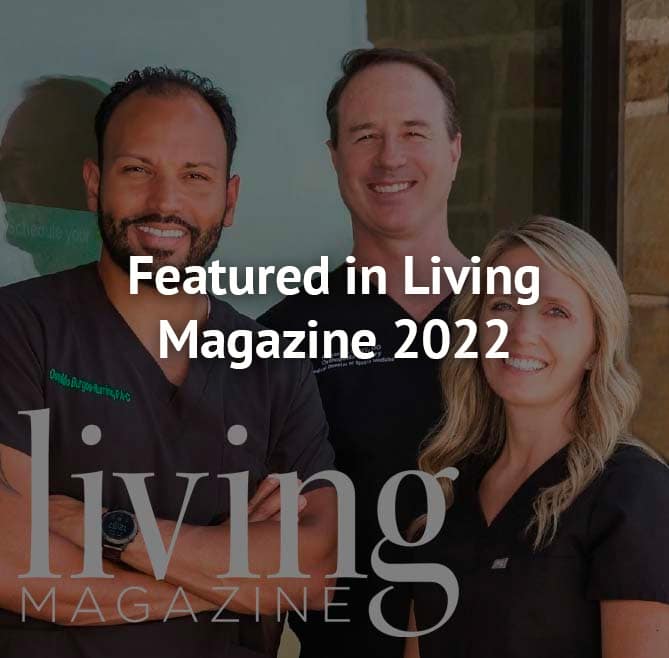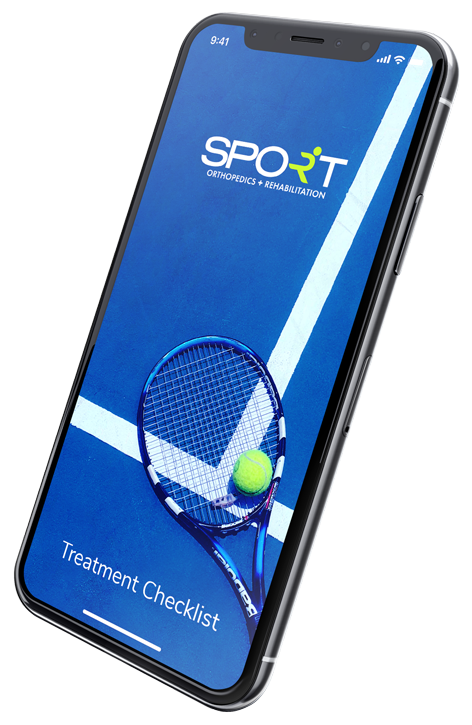UCL Tear Treatment in Dallas
Ulnar Collateral Ligament Tear Treatment
UCL Tear Treatment in Dallas and Frisco, TX
The ulnar collateral ligament runs along the inside side of the elbow and helps to support it during particular activities, such as throwing. This ligament can be ripped or injured, resulting in discomfort, instability, and loss of function in the elbow. If you experienced an ulnar collateral ligament injury, you need physical examination and treatment from an orthopaedic specialist at SPORT. Not only do we treat professional athletes in the Dallas area, we also treat the everyday hobbyist and active individuals. To schedule an appointment with a Dallas orthopedic surgeon or a physical therapist in Dallas for a UCL tear, please call 469-200-2832 or fill out our online intake form.
What Is the Ulnar Collateral Ligament?
Ligaments are durable bands of tissue that connect bones and aid in joint motor function. A ligament connects the bones and acts as a tether. The connection is too lengthy when the ligament is ripped, and the bones move excessively. Pain, a sensation of instability or laxity, and an inability to perform or play sports can all result from this.
Inside the elbow is the ulnar collateral ligament group. It is linked to the ulna on one end and the humerus at the other. The anterior, posterior, and transverse bands make up the anterior, posterior, and transverse rings of a UCL. The anterior ring is the most critical for maintaining elbow integrity.
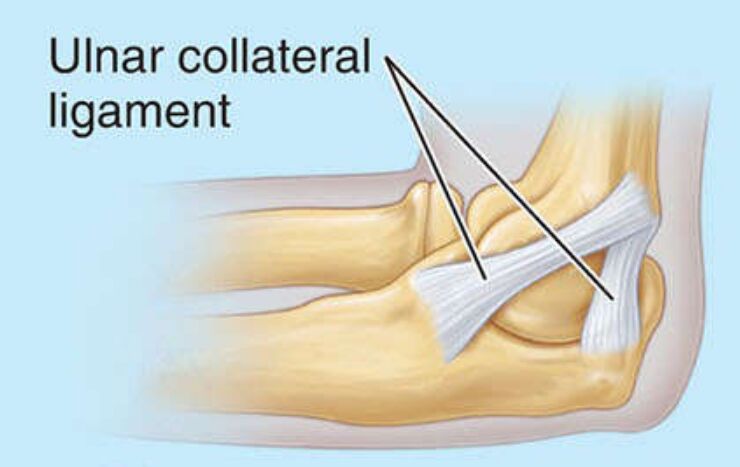
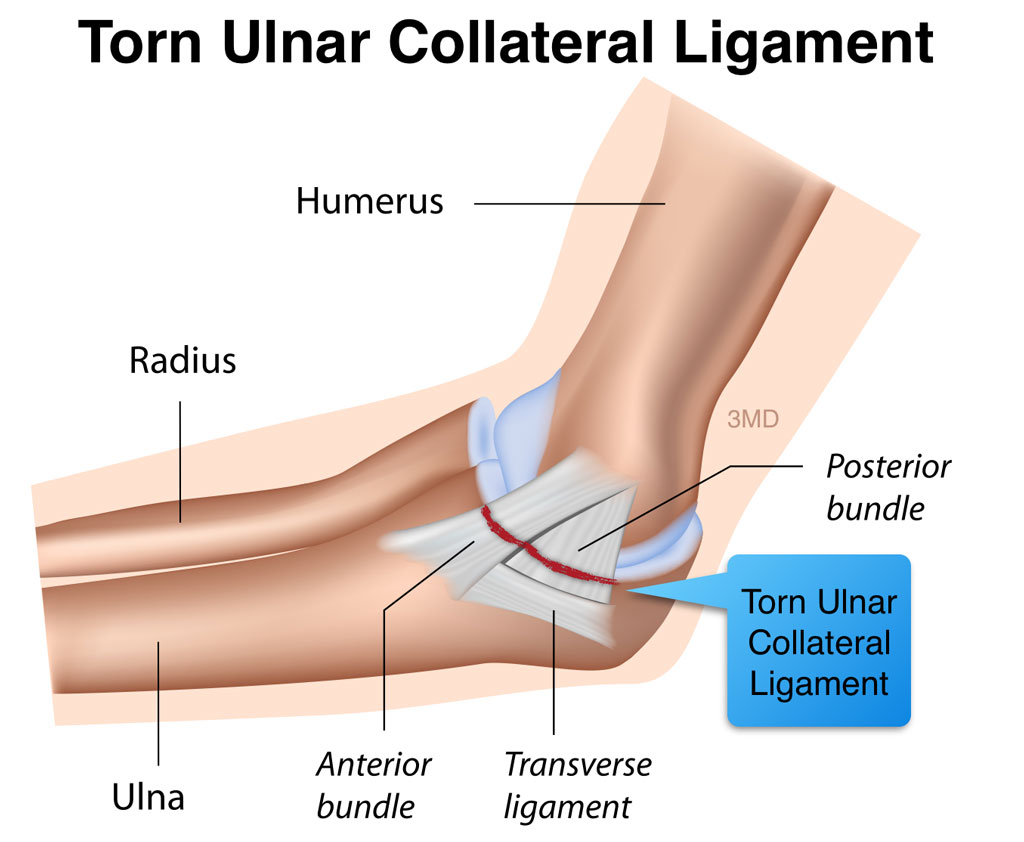
What Is a UCL Tear or Sprain?
A UCL injury is most typically linked with baseball pitchers and other athletes that undertake regular overarm movement due to overuse and wear and strain on the ligaments in the elbow. Complete rips to less serious damage such as inflammation are all possible UCL injuries. A severe impact to the elbow can also induce a UCL injury, however most occurrences are the result of overuse from repetitive actions. Below, we list the different degrees of UCL sprains.
- First degree sprain: You’ll feel some elbow pain, but no stretching or tearing of the ligament occurs.
- Second degree sprain: This often involves intense pain and stretching of the ligament.
- Third degree sprain: This involves a partially or completely torn ligament, which greatly affects the upper arm and muscles surrounding the ligament.
Symptoms of UCL Injuries
- An abrupt pop or discomfort along the inside of the elbow, preventing you from continuing to throw.
- After a period of intense throwing or other overhead activities, pain on the inside of the elbow develops.
- When propelling the arm forward immediately before releasing a ball, pain occurs.
- The pinky and ring fingers are tingly or numb.
A UCL injury can cause instability, which can make it difficult to engage in sports that involve throwing. However, it is unlikely to have an impact on your regular activities, such as carrying a grocery bag. Exercise, lifting weights, jogging, and other non throwing movements are rarely hampered by a UCL injury.
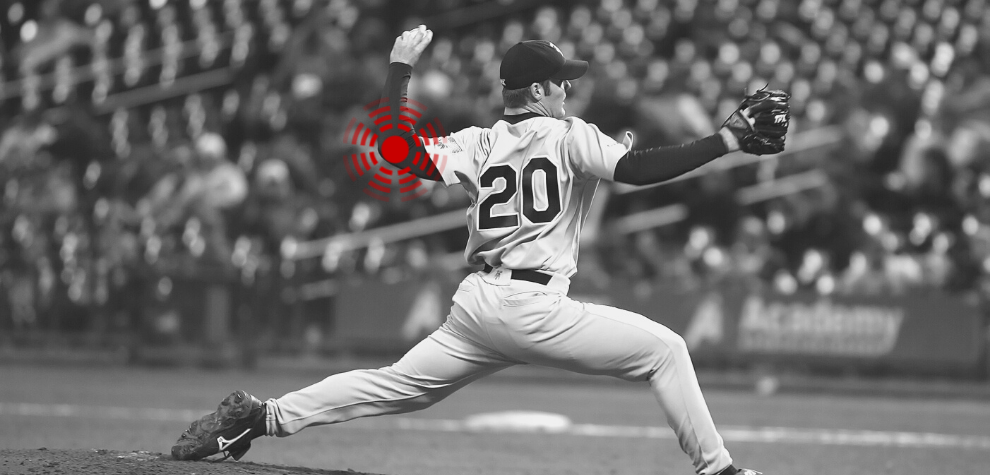
What Causes a UCL Tear?
Throwing sportsmen and people who utilize their upper extremity regularly are prone to UCL injuries. They can occur as a result of a recent or long-term injury. When too much force is placed on the elbow in a single occurrence, the ligament might rip, resulting in an acute injury. With this sort of damage, an audible ‘pop’ may usually be heard or felt, as well as extreme pain.
Over time, repetitive stress on the ligament from throwing or moving the arm causes a chronic injury. The ligament is strained, frayed, or ripped as a result of this. The repetitive movements of throwing, if the ligament is strained, can develop microscopic rips in the ligament, which can lead to rupture. Chronic injuries to this ligament are more prevalent than acute ones.
A sprain is the most common classification for an injury to the UCL. Grade 1, 2, and 3 sprains are the three types of sprains. Grade 1 sprains are those in which the ligament is strained but not torn. A grade 2 sprain means the ligament has been strained and a partial rupture is possible. A full tear of the ligament is indicated by a grade 3 sprain.
How Are UCL Tears Diagnosed?
If you experience any of the symptoms listed above, the next step in identifying the injury is to seek medical help. X-rays will very certainly be taken to rule out any fractures, stress reactions, or loose pieces in the joint. Several unique tests will be performed during the physical exam segment to assess for a UCL injury. Something called the Valgus stress test is the most prevalent test.
The inside section of the elbow is “opened up” by applying a force to the outside of the elbow. The UCL should prevent the joint from expanding if it is functioning effectively. A sprain or rupture of the UCL is indicated if there is laxity during this examination. A sprain or rupture of the UCL can be detected by laxity or discomfort. Other specialized tests are available, although the Valgus stress test is the most commonly used.
If the Valgus stress results are positive and there is discomfort on the inside of the elbow, the doctor will usually schedule an MR arthrogram. This is an MRI, but dye is injected into the elbow joint to make it more accurate. The dye aids in the accuracy of the test by filling in the space where a tear may exist, making it easier to notice. If a tear is evident, surgery may be the most effective way to heal it.
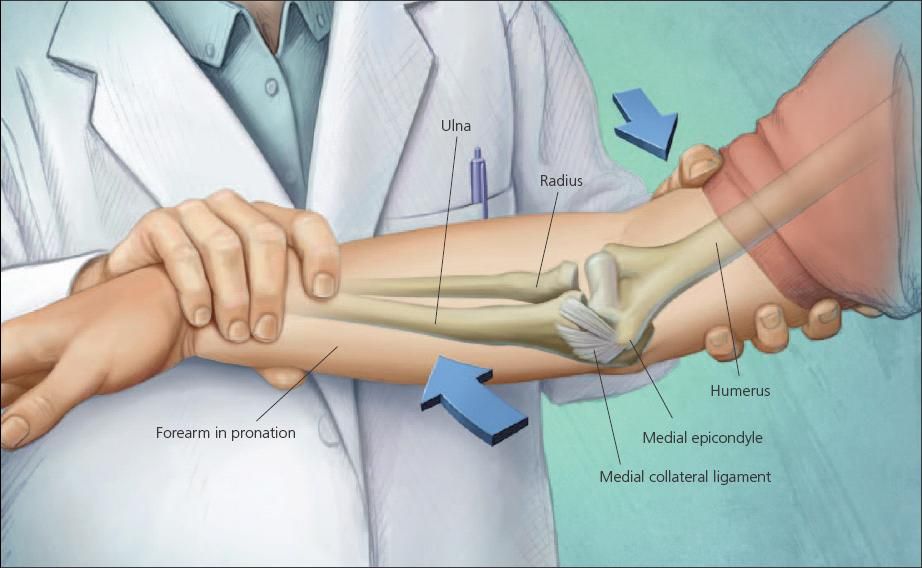
How to Treat a UCL Injury
As with many orthopedic injuries, treatment options for ulnar collateral ligament injuries range from simple rest to surgical repair. The best option for you will depend on the severity of the UCL injury. In addition to the severity of your injury, your orthopedic specialist will consider your health goals when forming a treatment plan.
Nonsurgical Treatment
Nonsurgical therapies may be all you need if your job or hobbies do not put a lot of repeated stress on your elbow. These therapies might include any of the following.
- Rest and cold compresses
- Anti inflammatory medication
- Physical therapy to both strengthen the elbow joint and improve your range of motion. This is helpful to prevent further injury.
Surgical Treatment
More severe cases require UCL reconstruction surgery, also called Tommy John surgery. If various therapies fail to offer the required pain relief, your doctor may consider surgery. Surgical UCL reconstruction is more commonly performed on athletes who require strong, stable elbows to engage in sports or exercise. Depending on the type of damage, there are a few surgical UCL repair methods.
Your elbow surgeon may be able to reconnect the UCL in a direct repair if it was damaged in a single traumatic incident and torn away from the bone. You may need UCL reconstruction if the UCL has been damaged over time. To repair your UCL, a surgeon might utilize tendons from elsewhere in your body or from a donation.
What Is Tommy John Surgery?
UCL reconstruction is a procedure that replaces a ruptured ulnar collateral ligament within the elbow with a tendon from another part of the body. The surgery’s purpose is to secure the elbow, reduce pain, and improve strength and range of motion. Dr. Frank Jobe developed and executed the treatment on baseball pitcher Tommy John for the first time in 1974, earning it the nickname Tommy John surgery.
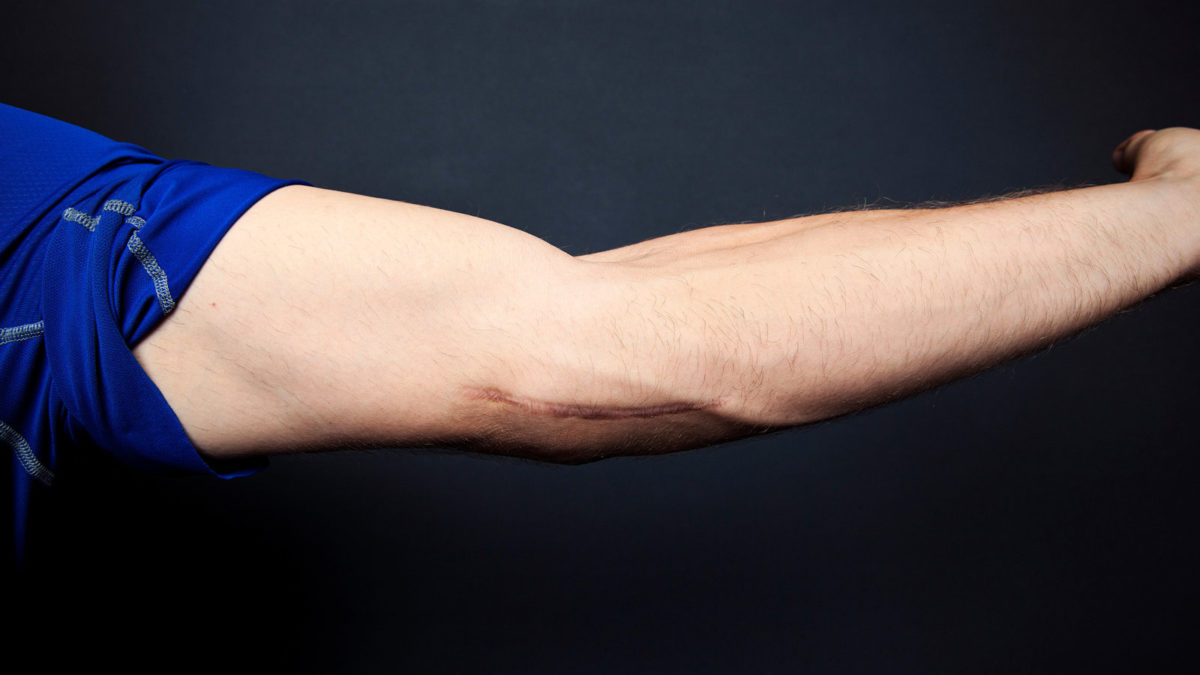
What to Expect After a UCL Reconstruction
Following Tommy John surgery, the rehabilitation process usually consists of three stages. Depending on how quickly the tissues recover, the time of each phase will vary from patient to patient.
The elbow is braced at a 60- to 90-degree angle immediately after surgery. The objective is to keep the repairing tissue safe while also lowering inflammation. To avoid muscle fatigue, begin physical treatment straight away, concentrating on your wrist, fingers, shoulder, and biceps.
You can begin moving your elbow joint one or two weeks following surgery. When you are not training, your doctor may place you in a movable brace that may be locked at a specific angle. For added comfort, an arm sling can be used. At this stage, physical therapy focuses on progressively expanding your elbow range of motion.
You may be able to completely bend your elbow by the end of the first month and gradually discontinue using the brace. Many patients restore their full range of motion in the elbow two to four months following surgery with proper physical therapy.
Complications and Risk Factors for UCL Tears
The UCL repair, like most procedures, carries the risk of infection and anesthetic complications. Nerve or blood vessel injury may occur as a result of this operation. This injury can cause numbness or weakness, which might be transient or permanent.
It’s also possible for the graft to stretch or even burst. A fresh graft may be utilized to make a second reconstruction in certain circumstances. Complications from the graft harvesting site are also possible, however they are uncommon and typically treatable with medicine.
Furthermore, as a result of the elbow injury, the ulnar nerve may be inflamed. The ulnar nerve goes around the elbow joint, and the UCL is positioned on the inside side of the elbow. To avoid further aggravation, it may need to be positioned in front of the elbow joint.
When Should I See a Doctor for a UCL Sprain?
If you have an acute ulnar collateral ligament injury, see your doctor as soon as possible. If you’re experiencing elbow discomfort, make an appointment with your doctor to discuss your alternatives. If you start therapy sooner, you will recover faster.
Frequently Asked Questions
Can a UCL Tear Heal on Its Own?
Nonsurgical therapy can help minor ulnar collateral ligament injuries recover. If you intend to undertake any severe overhead or throwing activities, or if the ligament is damaged to an advanced degree, your doctor may propose surgical repair of the ruptured UCL.
How Long Does a UCL Tear Take to Heal?
If your ulnar collateral ligament tear can be managed without surgery, you might expect to be out of commission for only a few weeks to a few months. It depends on how much range of motion you want in your elbow. Your doctor and physical therapist will collaborate to keep track of your improvement.
If Tommy John Surgery is suggested, recovery can take anywhere from nine months to a year, and in some cases much longer. A movable brace will be fitted on your elbow to progressively enhance the range of motion until you can completely extend it. If you want to resume throwing and competing, you’ll need more intensive physical treatment to rehabilitate your elbow sufficiently to withstand the force. Everyone recovers at their own pace, but you should never hurry back into your sport. The probability of failure increases if the graft is subjected to too much force before it has healed.
Call SPORT Orthopedics and Physical Therapy Today
At SPORT, we take great pride in our ability to help patients get back to their active lifestyles. Our elbow specialists treat a wide variety of conditions with a wide variety of treatment options. To schedule an appointment with an experienced orthopedic specialist in Dallas, please call 469-200-2832 or fill out our online intake form.

